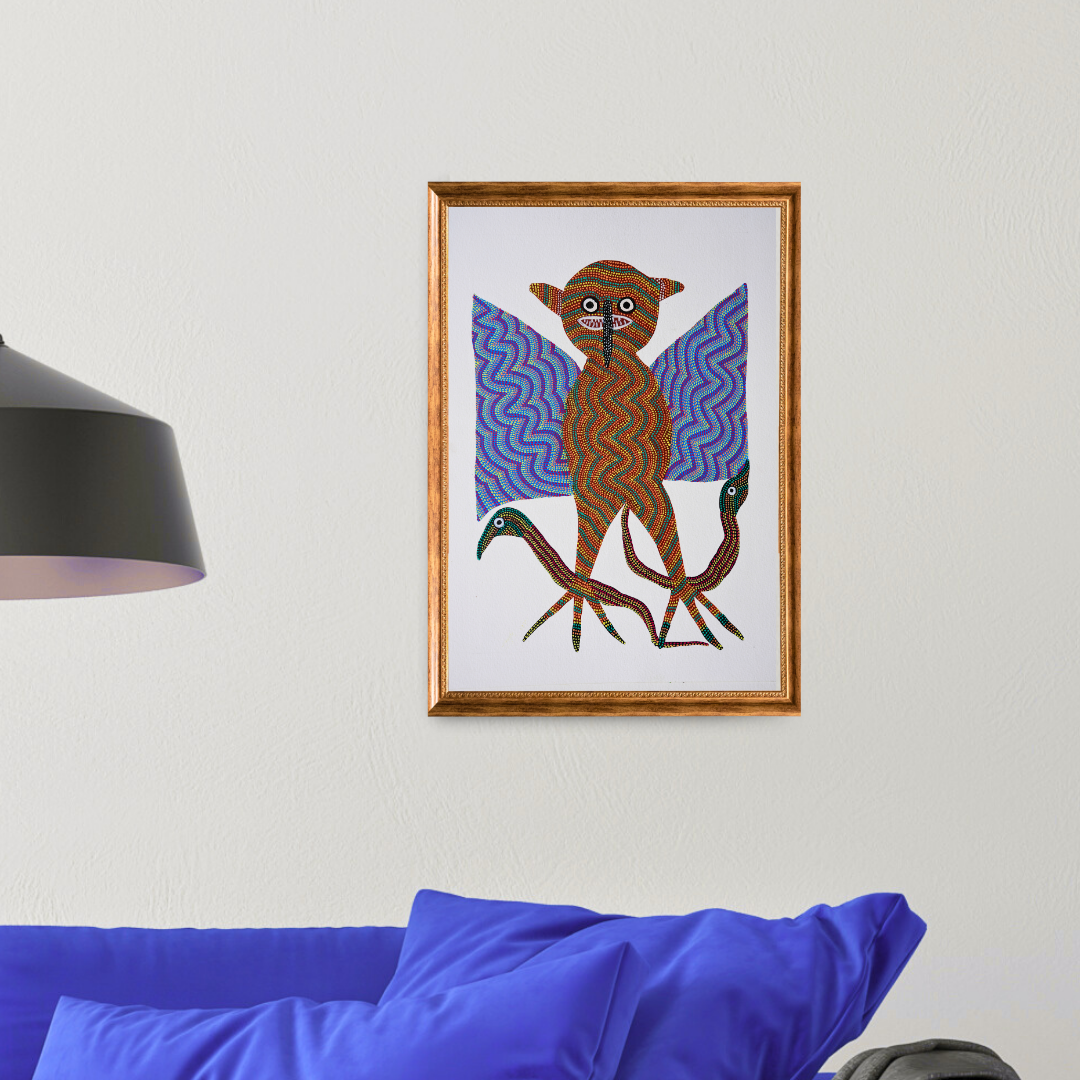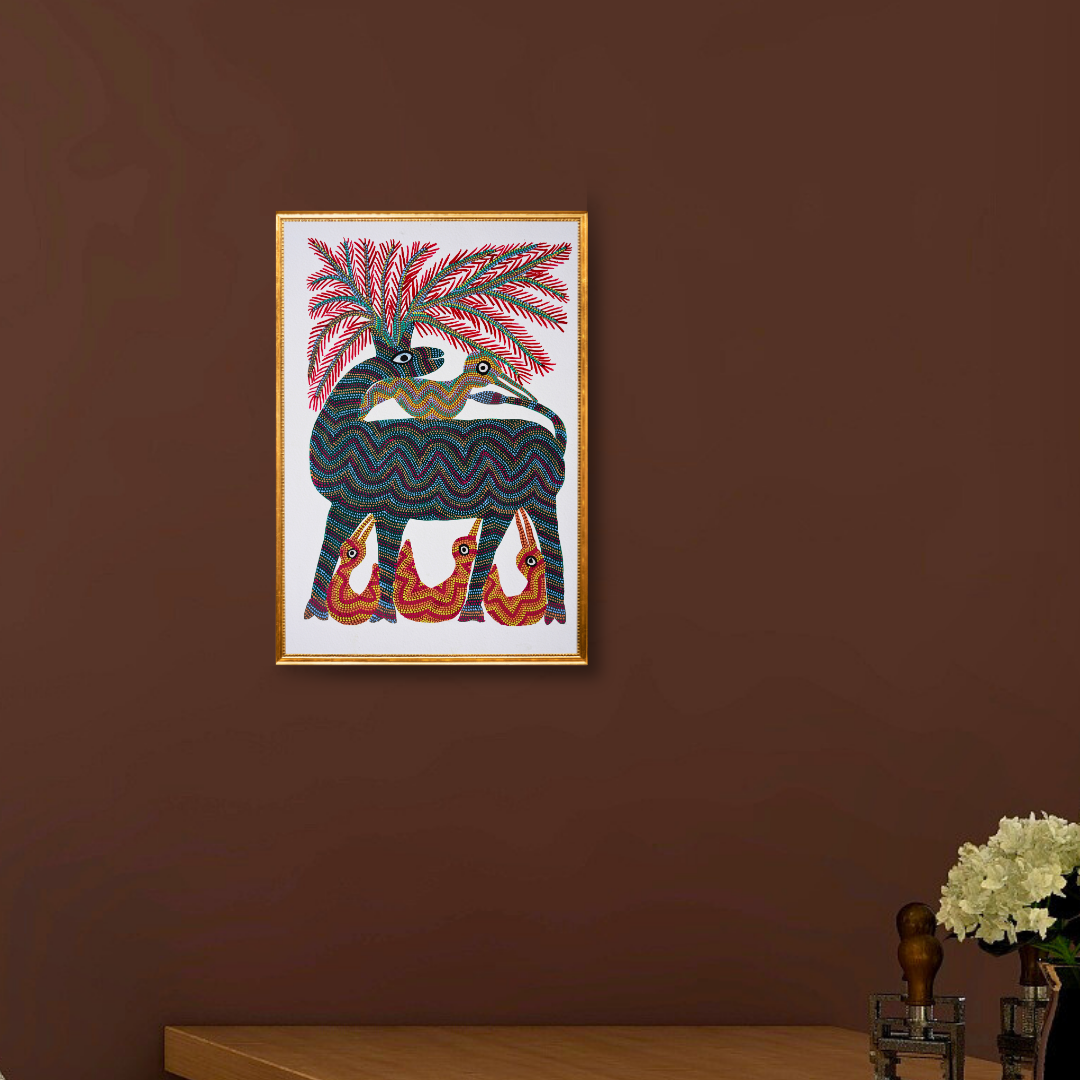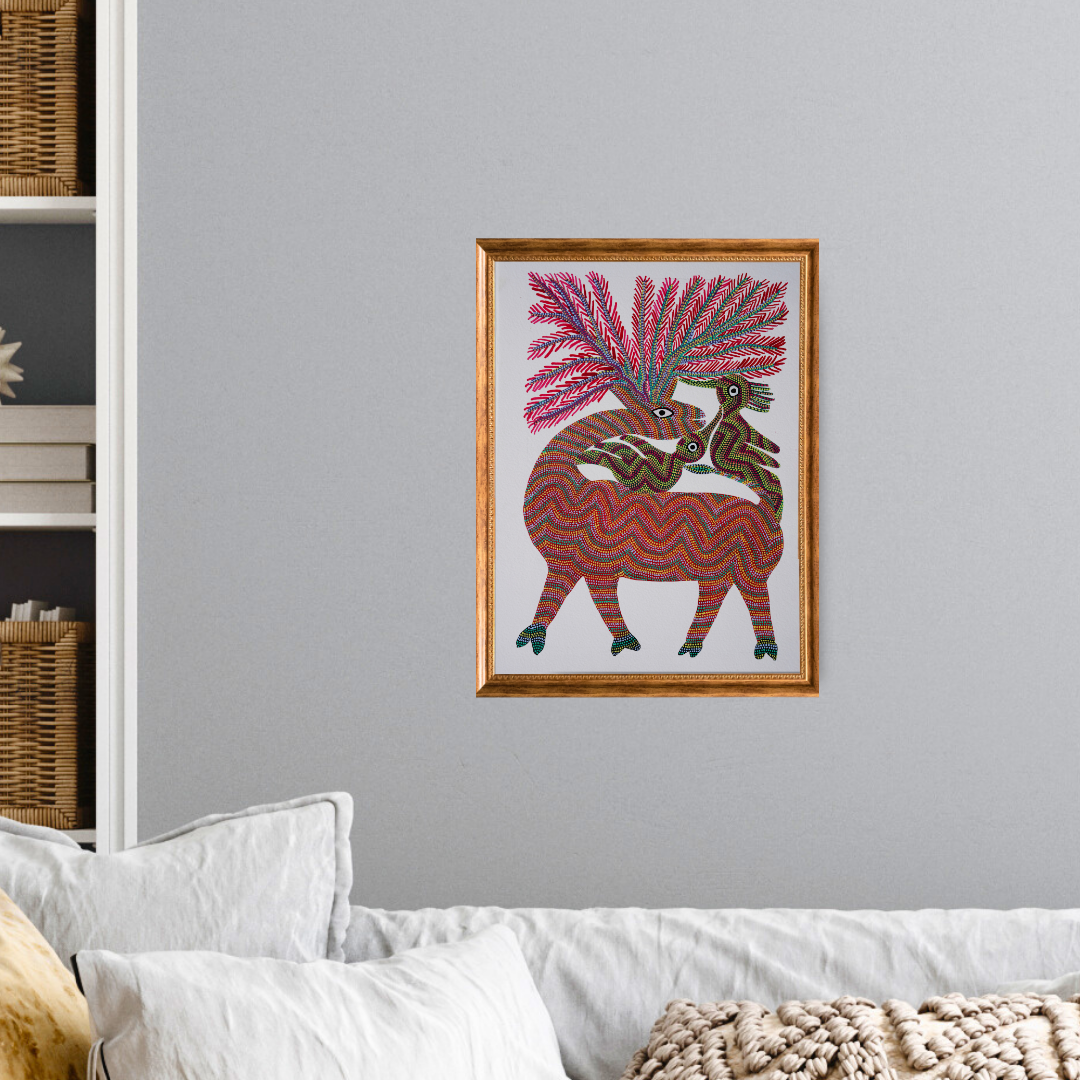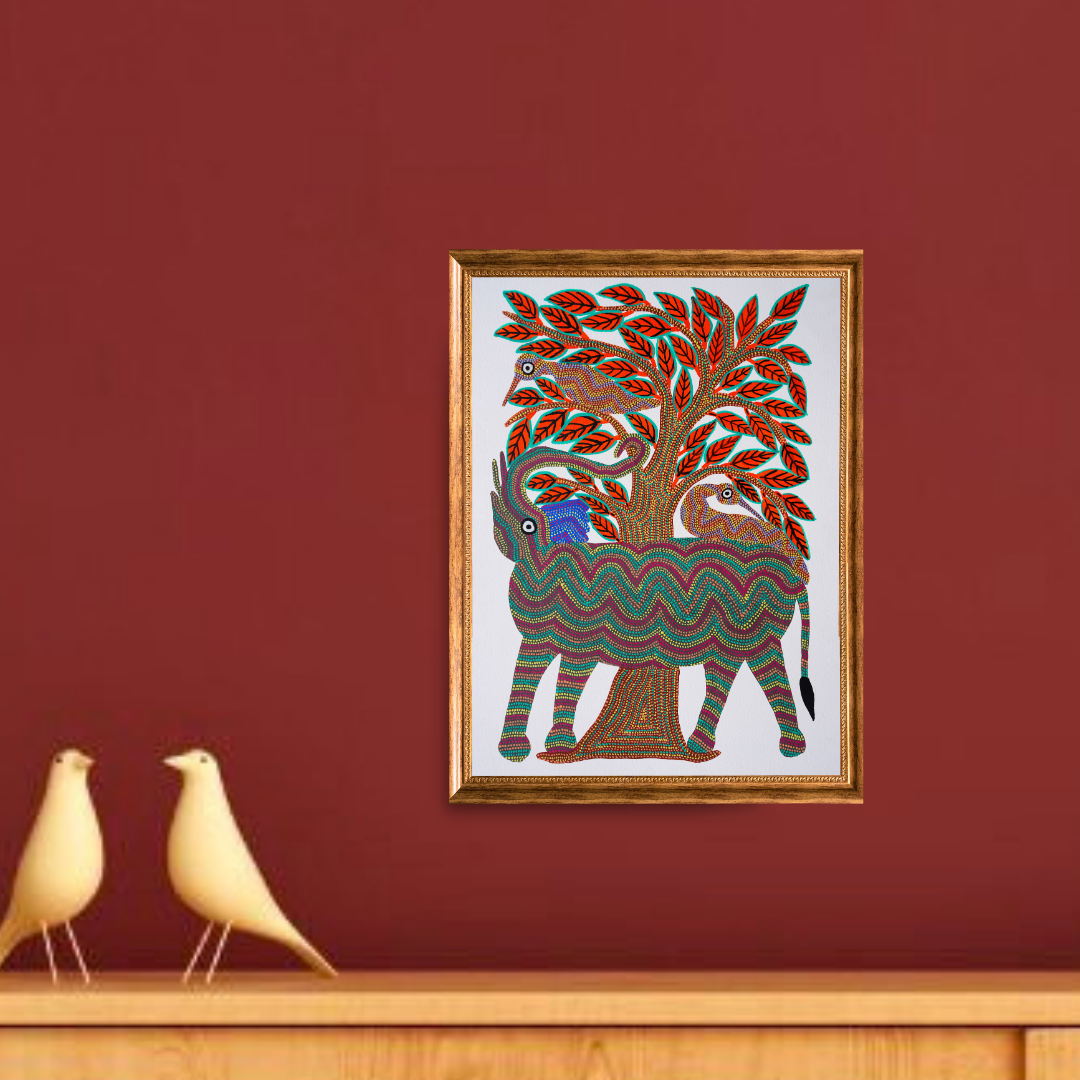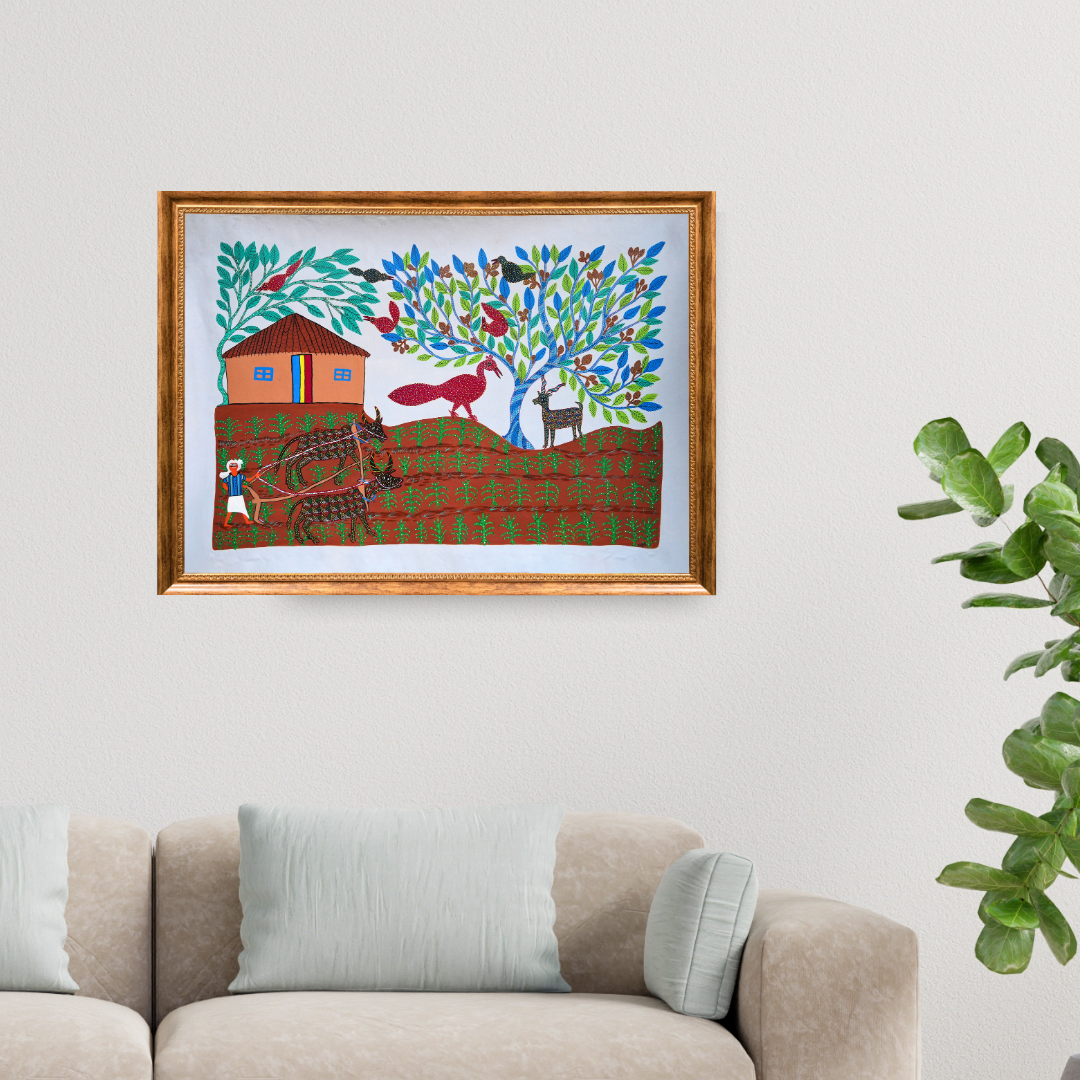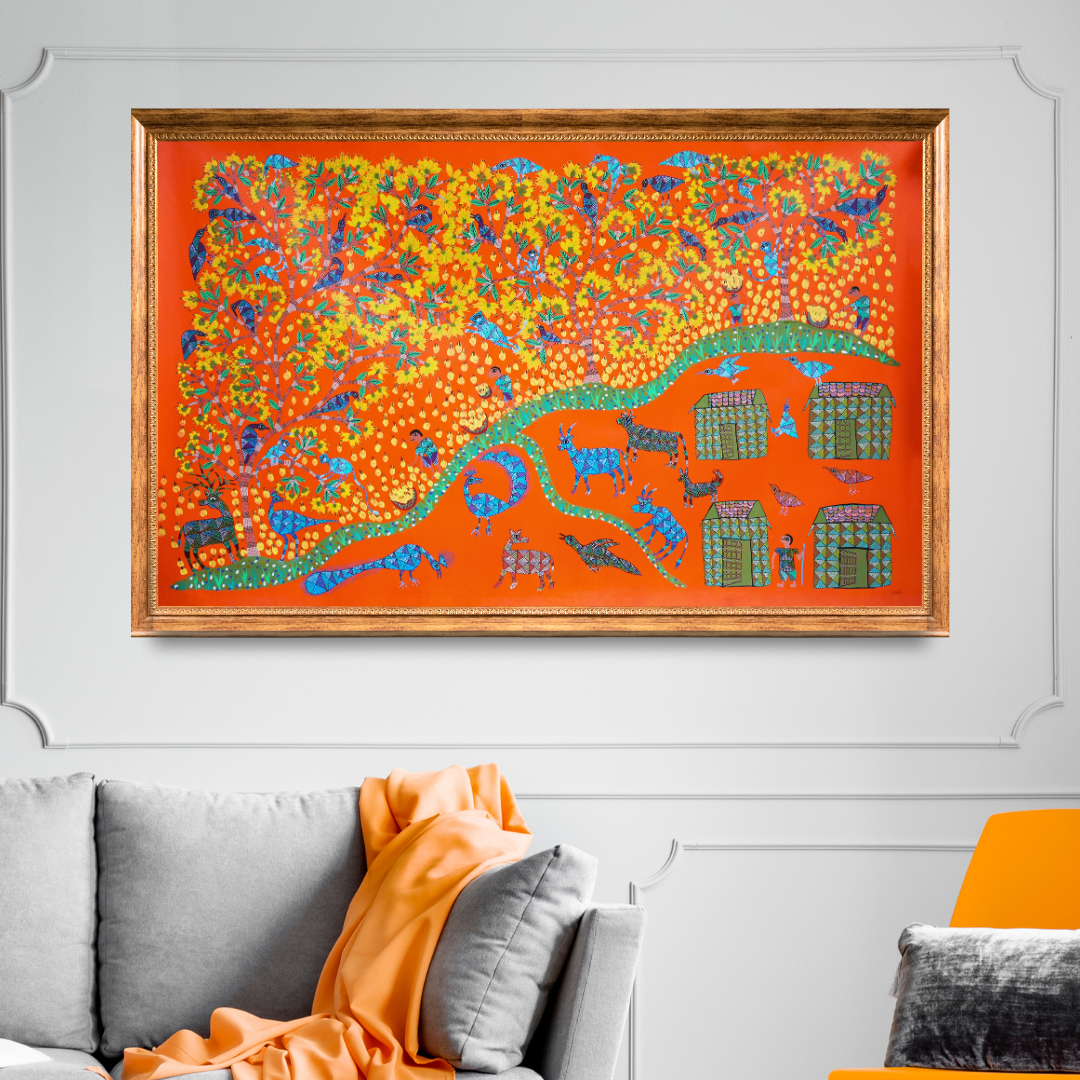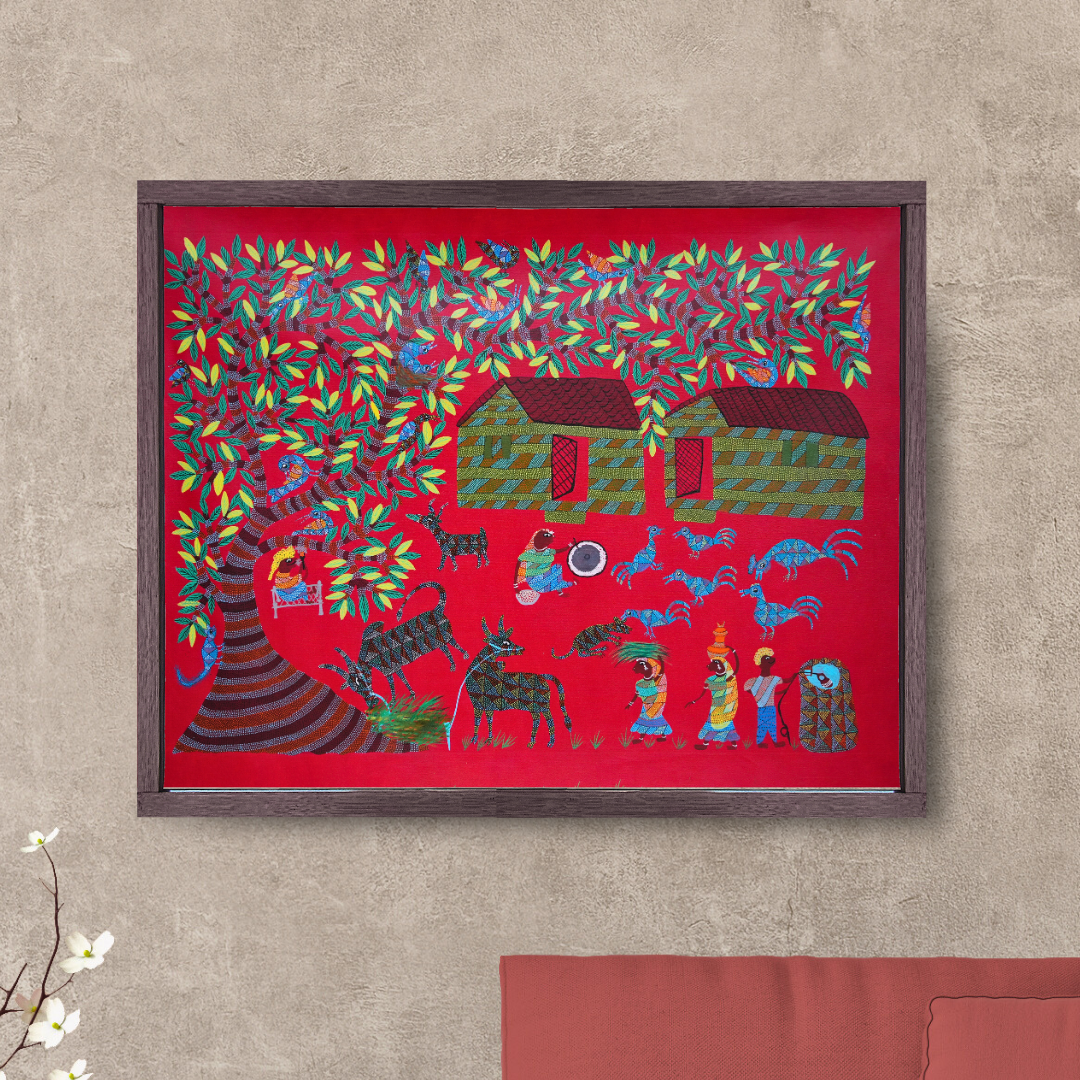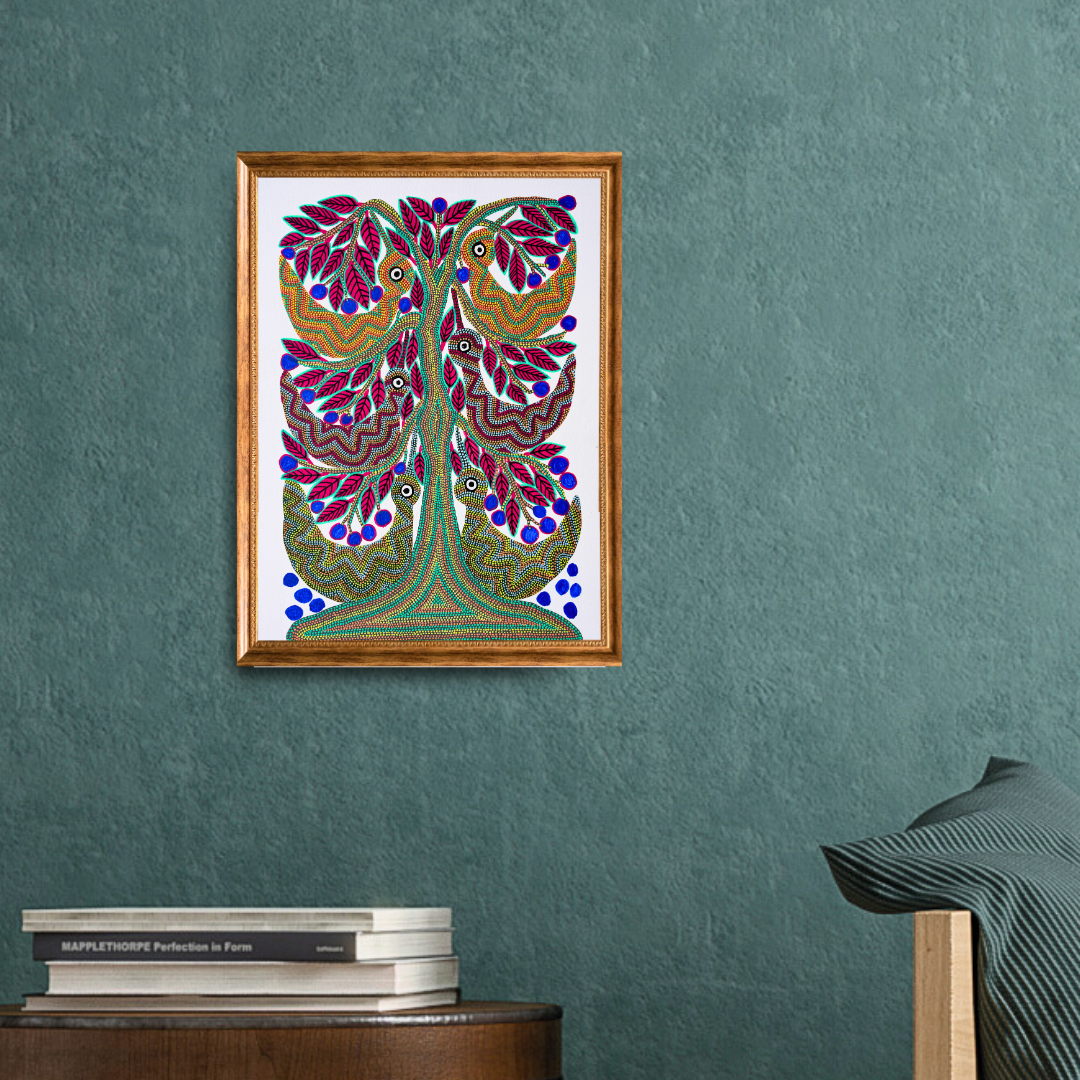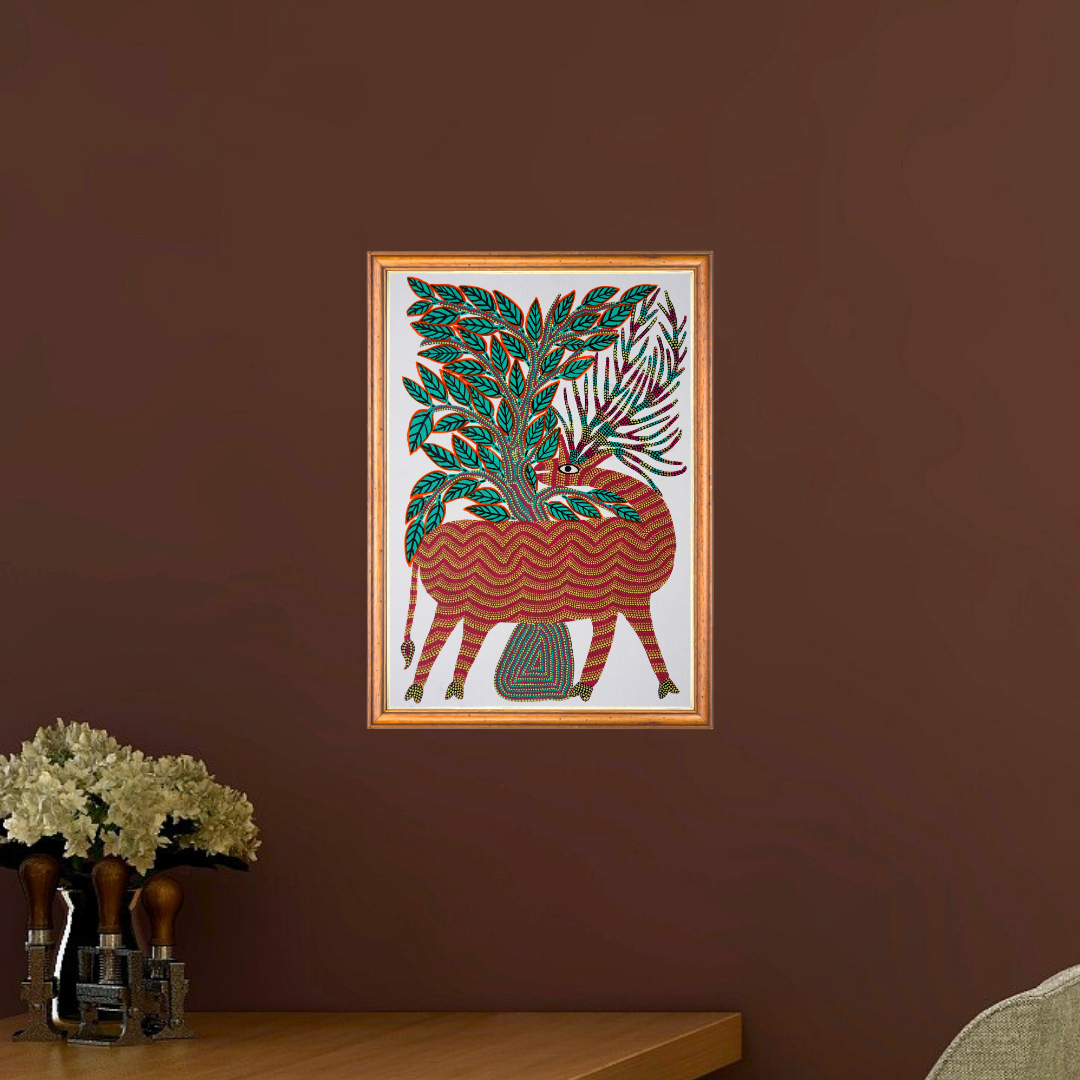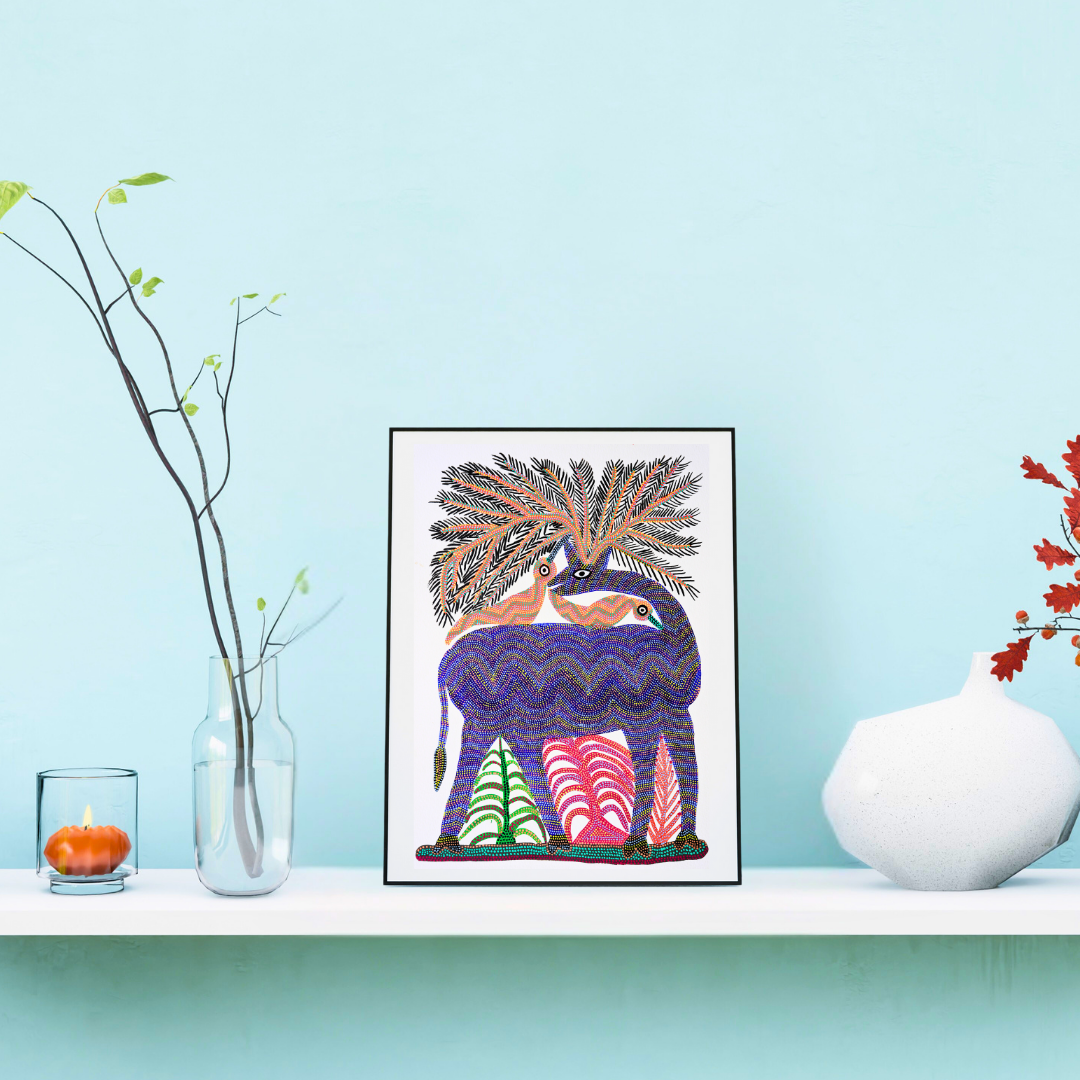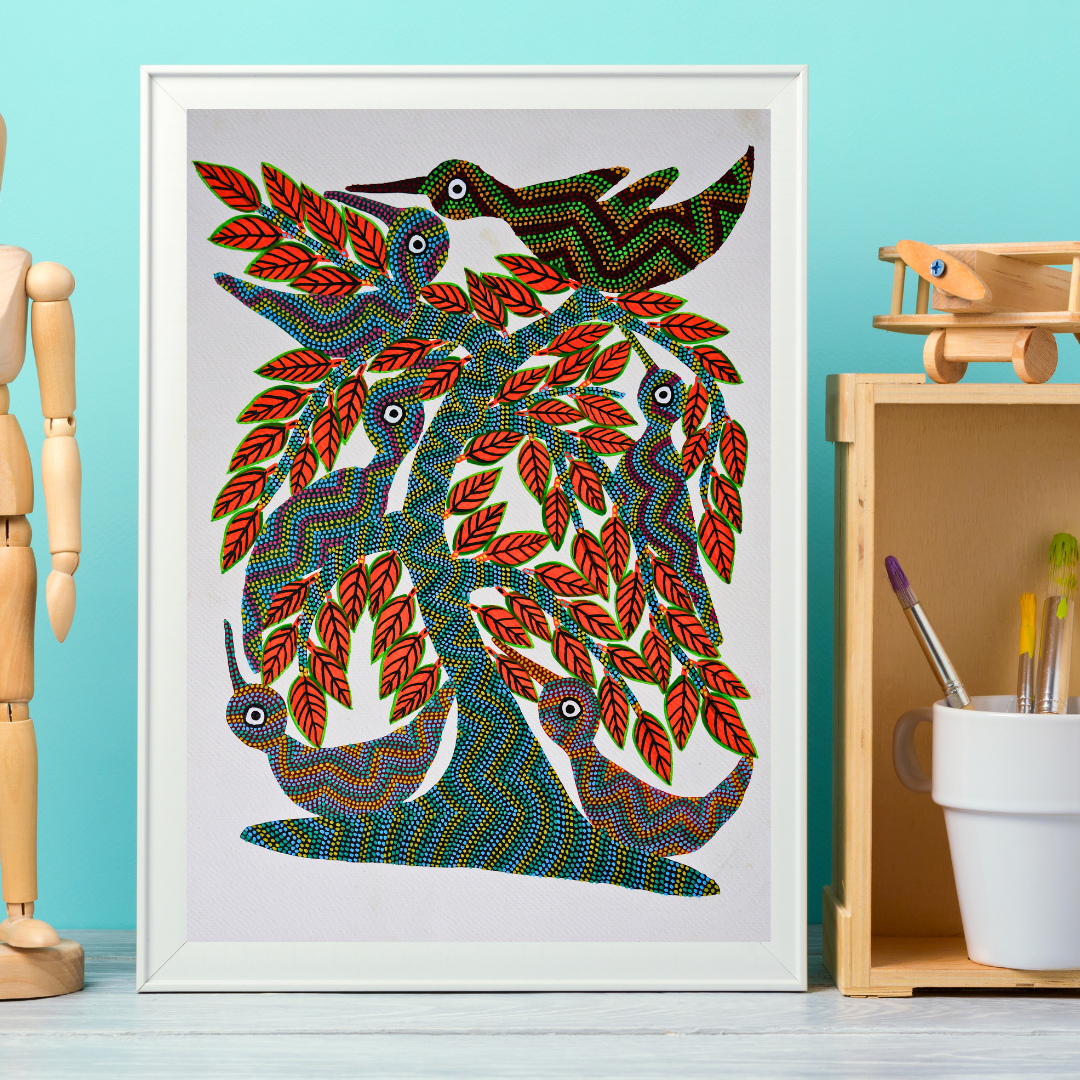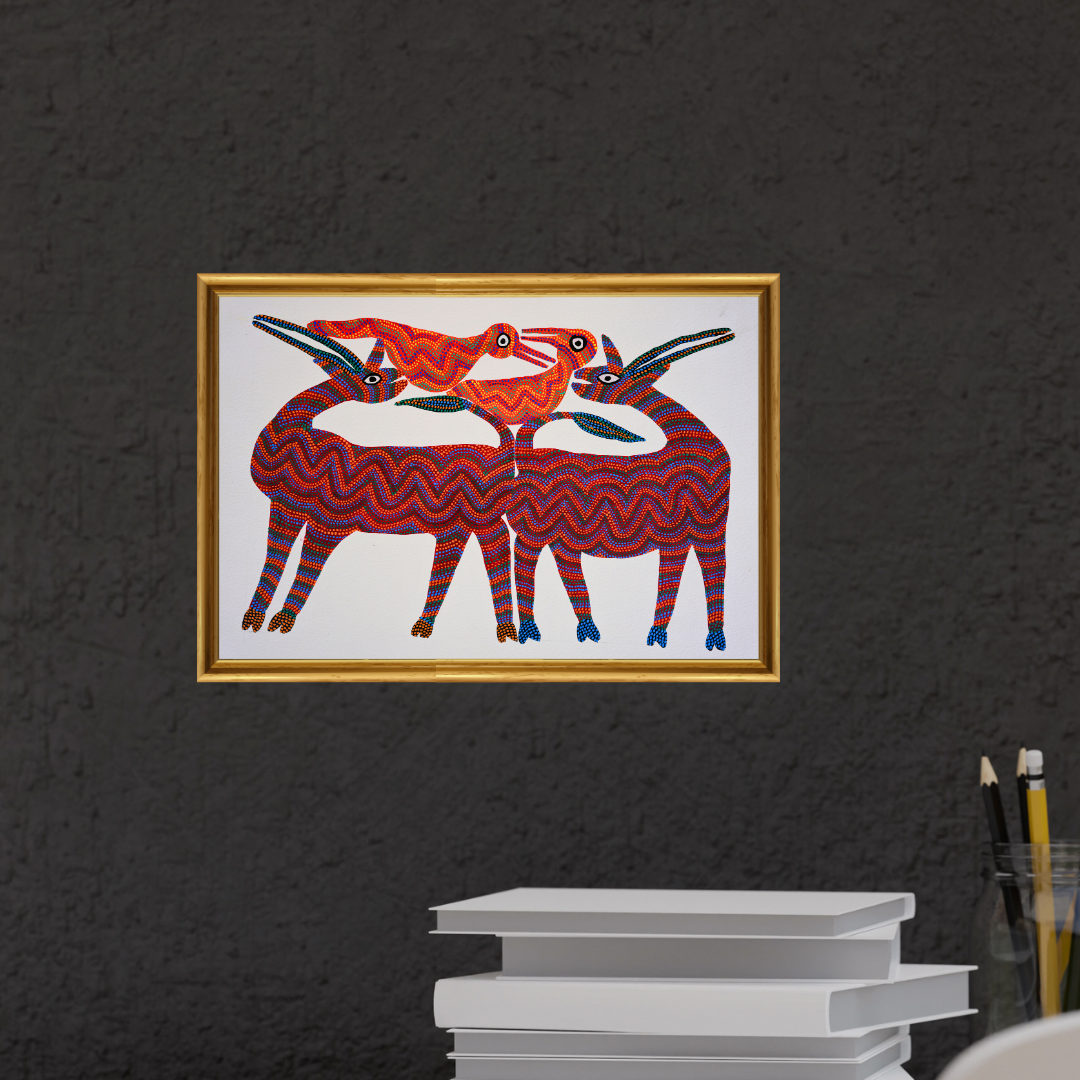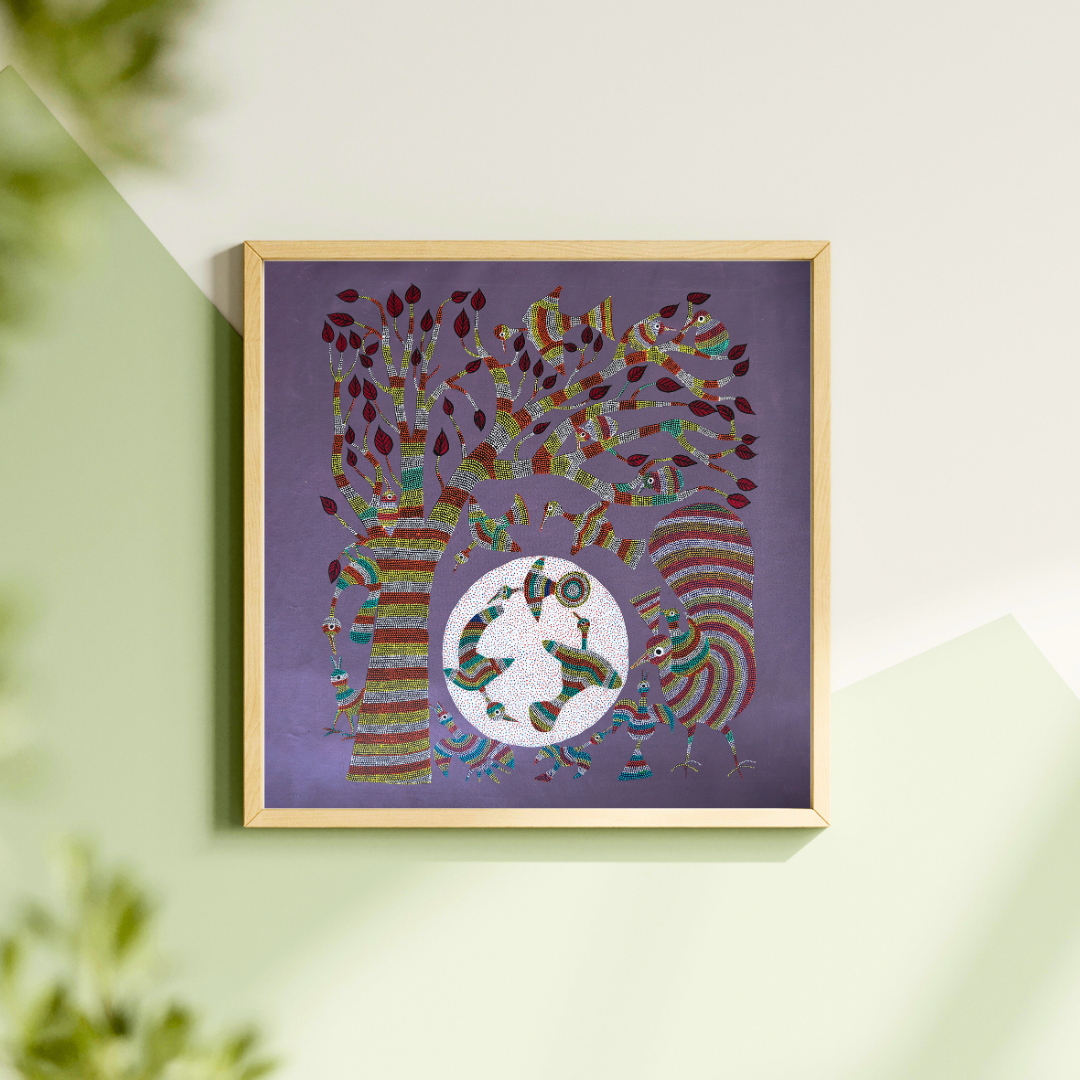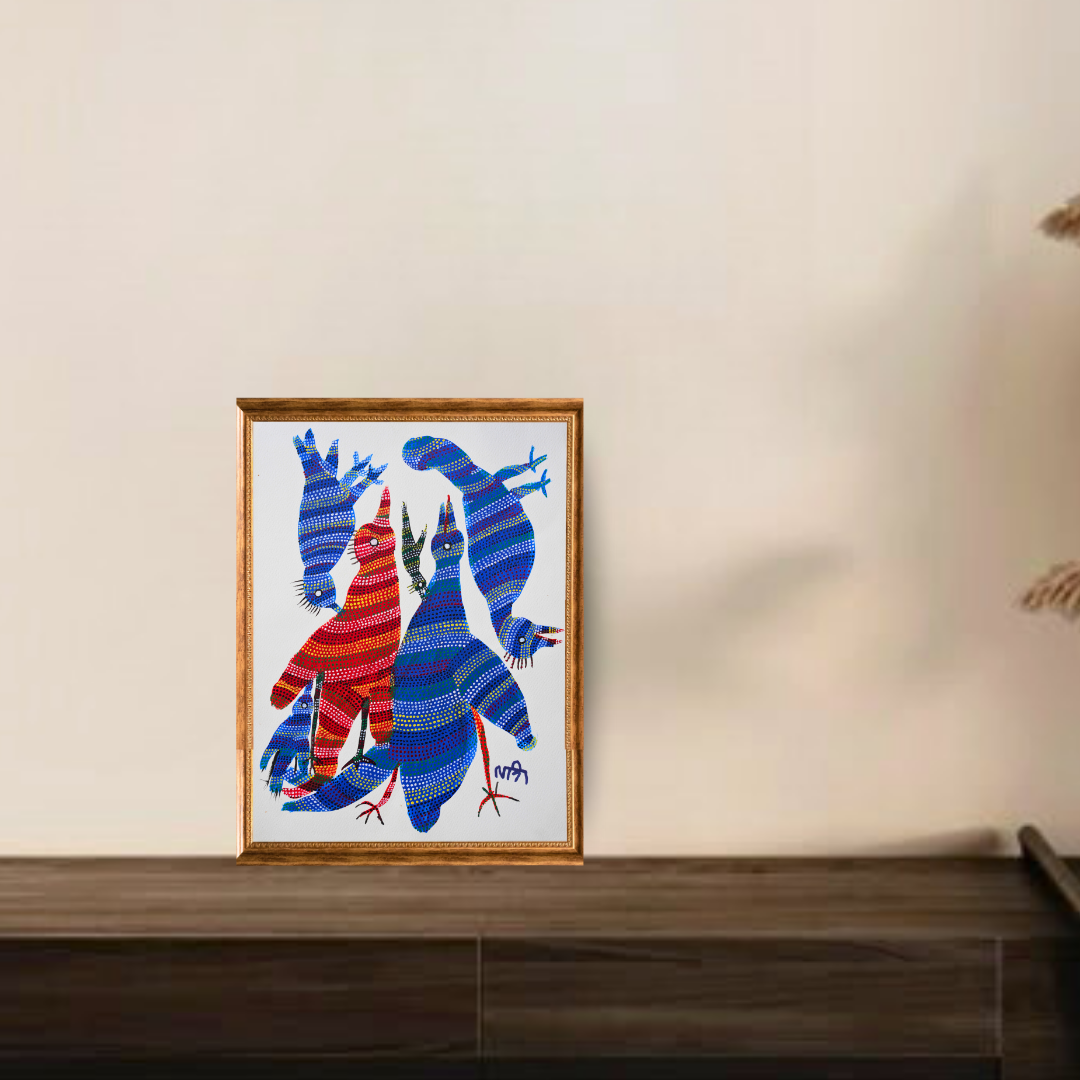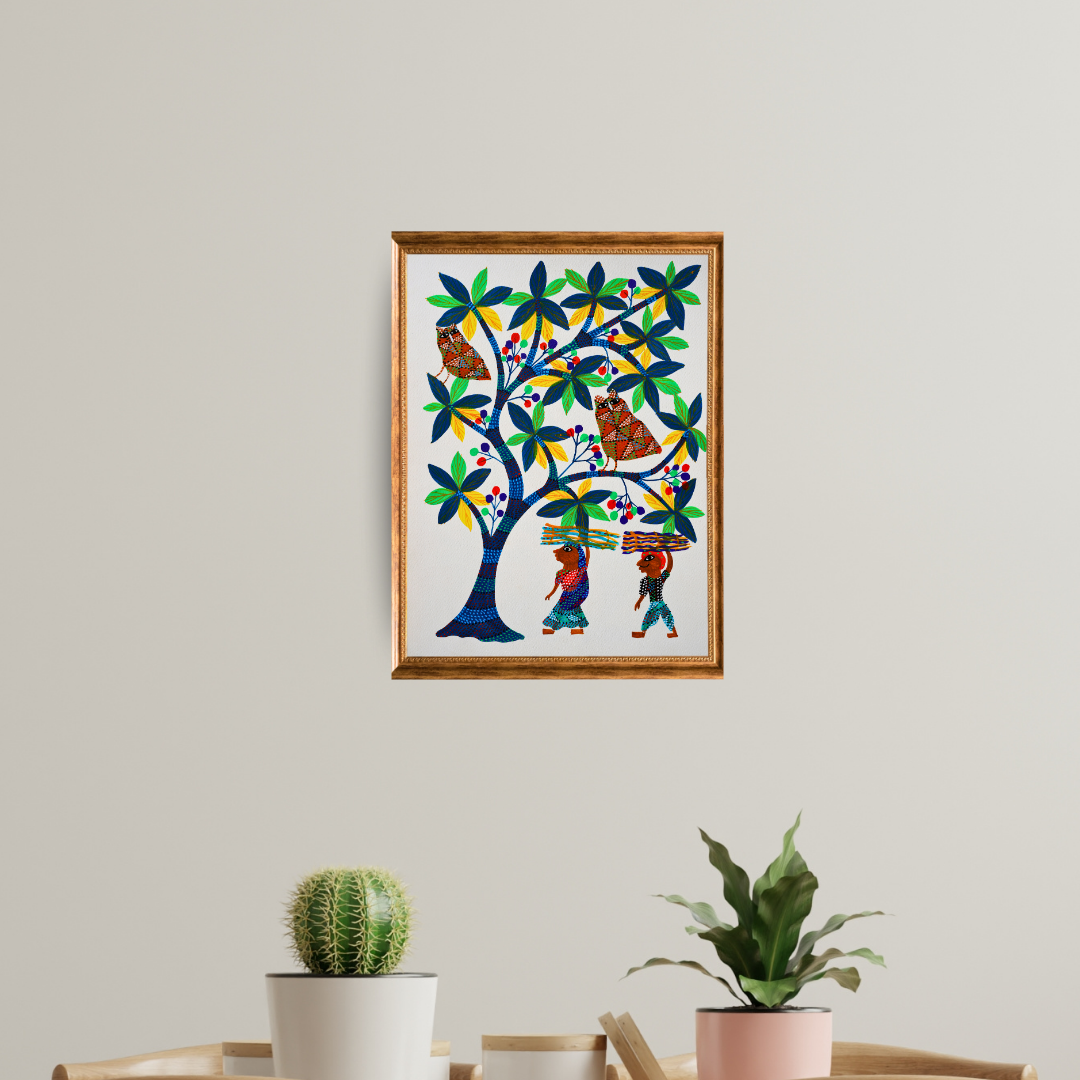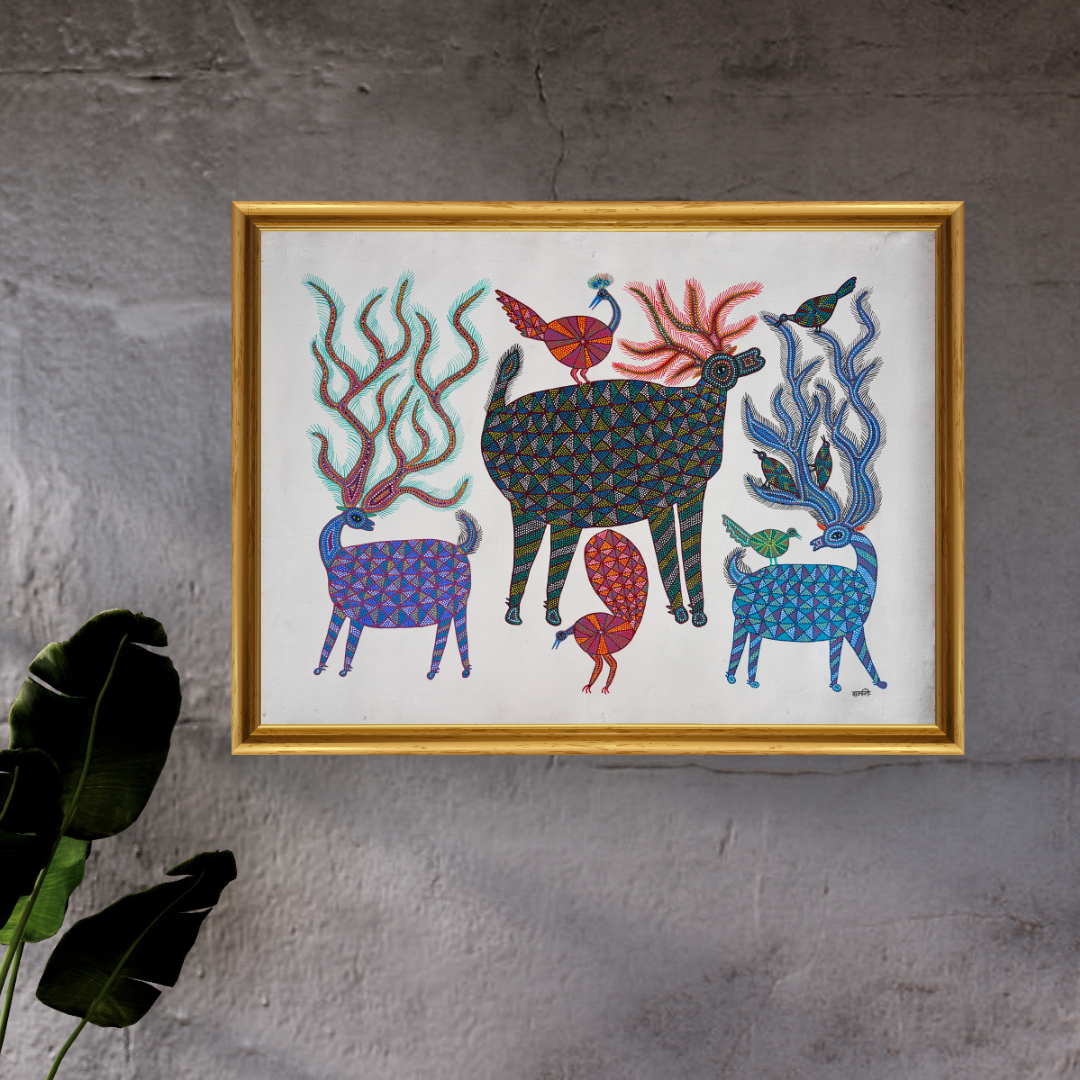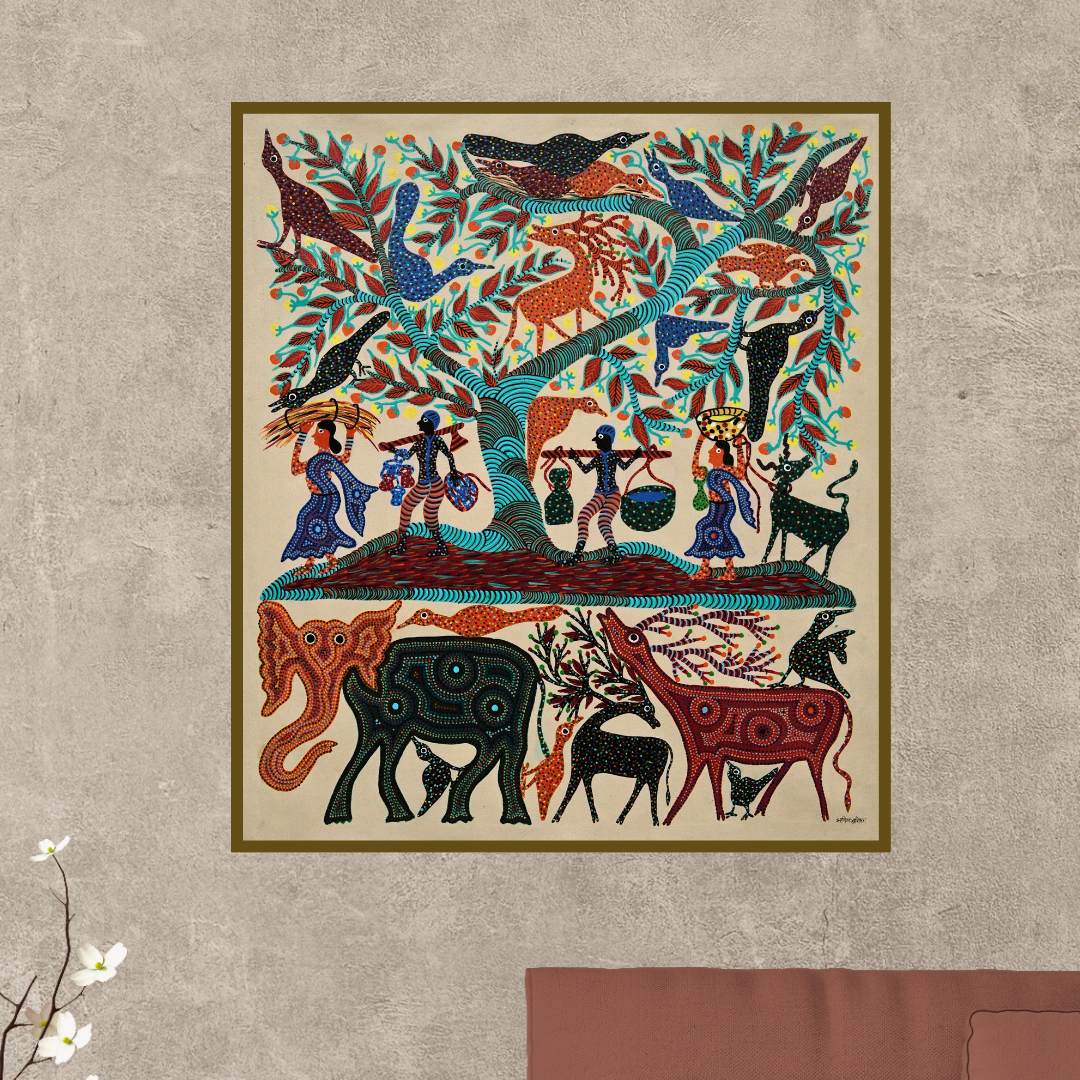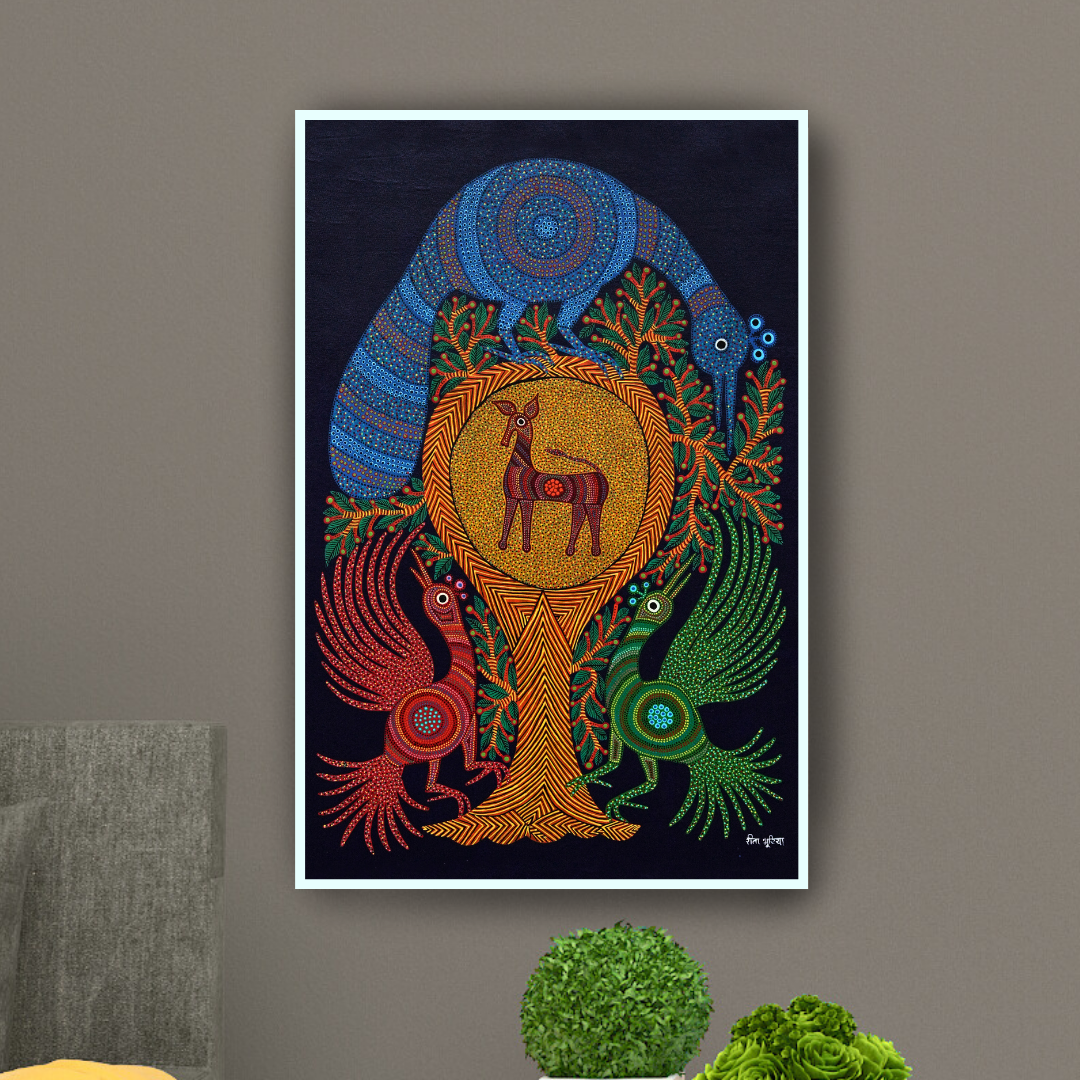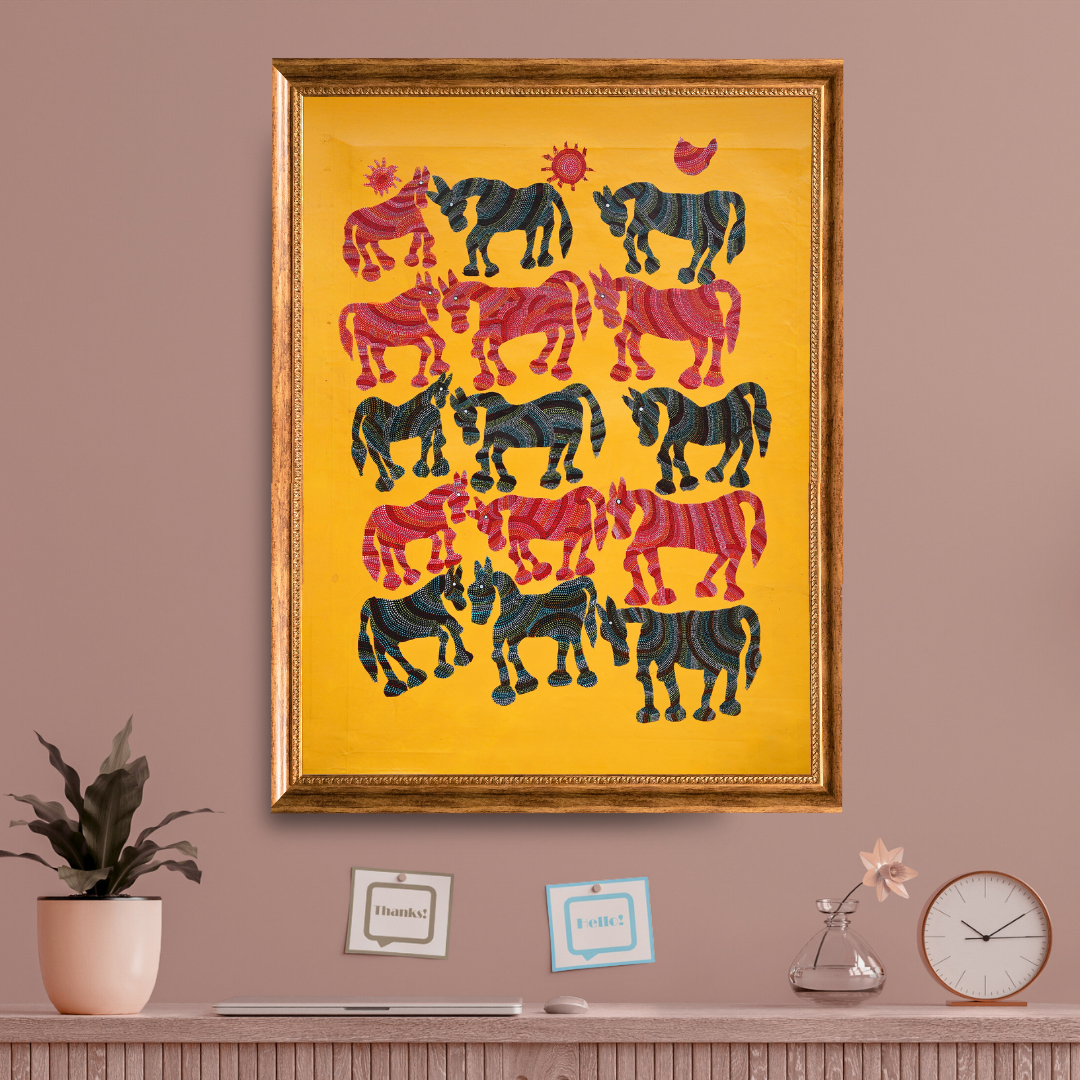Paintings
Showing 1 – 20 of 96
Paintings
The Friendship of Owl and Snake
In Bhil art, the friendship of Owl and Snake by Ramesh Katara blends strength, m...
Paintings
Swamp Deer Playing with Birds
Explore and experience the rustic beauty of Bhil tribal art through the lens of ...
Paintings
Birds Playing with Barasingha
Birds Playing with Barasingha by Ramesh Katara highlights trust, strength, and h...
Paintings
Elephant with Birds
Your search for a vibrant, simple yet expressive tribal art ends here! Artist R...
Paintings
Birds on Mahua Tree
Bring home a slice of the forest with this exquisite hand-painted artwork by tri...
Paintings
Farmer At Work
Artist Ram Singh Bhabhor, a tribal artist from Madhya Pradesh, is known for his ...
Paintings
Village of Mahua Tribe
‘The Village of Mahua Tribe’ by Ram Singh Bhabhor shows the everyday life of peo...
Paintings
The Village Environment
Bold, bright, and full of life - enter the wonderous world of Indian tribal art ...
Paintings
Perched Birds
‘Perched Birds’ by artist Ramesh Katara brings to life a narrative from the wild...
Paintings
Barasingha and Tree
Barasingha and Tree by Ramesh Katara highlights the deep connection between anim...
Paintings
Swamp Deer and Birds
‘Swamp Deer and Birds’ by Ramesh Katara shows the strong connection between anim...
Paintings
The Playful Birds on a Tree
The Playful Birds on a Tree by Ramesh Katara shows nature's lively spirit in the...
Paintings
Two Swamp Deer and Birds
"Two Swamp Deer and Birds" by Ramesh Katara shows companionship and harmony in n...
Paintings
The Gathering of Peacocks
Pinju Tahed’s ‘The Gathering of Peacocks’ brings alive a moment from the jungles...
Paintings
The Gathering of Birds
In this captivating Bhil painting titled ‘The Gathering of Birds, ’ acclaimed tr...
Paintings
Carrying Firewood Home
Take a peek into lives of people from the Bhil tribe in Central India and their ...
Paintings
Harmony in the Wild: Deer, Peacocks and Birds
Harmony in the Wild: Deer, Peacocks, and Birds by acclaimed Bhil artist Ram Sing...
Paintings
The Interconnection of Humans and Wildlife
Step into the vibrant world of Bhil tribal art with ‘Interconnectedness of Human...
Paintings
Nestled Under Wings of Vigil
‘Nestled Under The Wings of Vigil’ is a deeply symbolic and emotionally rich Bhi...
Paintings
Red and Black Pithora Horses
Award-winning artist Lado Bai is widely known for continuing the legacy of Bhil ...
Discover Authentic Indian Art Paintings Online
Indian art paintings are more than just decorative, they are an experience steeped in heritage, storytelling, and culture. At Rooftop, we bring you a curated collection of original Indian paintings created by award-winning folk and tribal artists from across the country. From the earthy elegance of Warli to the vivid storytelling of Gond and Bhil, every artwork on our platform is hand-painted and rooted in centuries-old tradition.
These are not mass-produced pieces; they are timeless narratives painted by artists who have inherited their craft through generations. Whether you're looking to add warmth and personality to your living space, start creating a meaningful art collection, or gift something authentic and artistic for art lovers amongst your friends and family, our collection of Indian art paintings offers the perfect starting point.
Available across style and categories- our paintings are a celebration of India’s diverse culture - capturing local myths, daily life, spiritual beliefs, and nature’s rhythm with unmatched detail and soul. By buying paintings from Rooftop, you’re not just shopping for paintings for your home - you're adding a piece of Indian heritage to your space and supporting India’s master artisans to build a more sustainable culture. The paintings are all original artworks, signed by master artists who receive a fair royalty on each of their artworks. From artworks based on nature to auspicious paintings of gods and goddesses to beautiful depictions of folk and tribal tales - each painting is a unique masterpiece. So go ahead and shop from our collection and add a piece of India’s artistic heritage to your space too!
Bhil Art Paintings
Native to Madhya Pradesh, Bhil art is instantly recognisable for its vibrant colours and dotted textures. Often depicting animals, forests, and tribal myths, Bhil paintings are a celebration of the natural world. Our collection features works by renowned female artists like Bhuri Bai, Lado Bai, Ramila Bariya, Rita Bhuriya, Kamila Bariya - each painting telling a unique story from tribal life from a woman's perspective. If you’re looking for traditional Indian art that bursts with colour and meaning, our Bhil art collection of handpainted paintings is a perfect choice.
Gond Art Paintings
Gond art, from the heart of central India, is known for its intricate patterns and deep symbolic meanings. Rooted in storytelling, these paintings often depict flora, fauna, and folklore. Gond paintings beautifully express the connection between humans and nature, making them ideal for homes that seek harmony and cultural depth. Explore our Gond collection to find handpainted artworks that bring both energy and elegance to your space. With paintings by artists like Venkat Singh Shyam, Kaushal Tekam, Sushil Urveti Sahdev Pusham and other famous Gond tribal artists you are sure to find the perfect Gond painting for your space.
Baiga Art Paintings
Baiga art is a deeply expressive tribal art form from the Baiga community of central India, primarily found in Madhya Pradesh and Chhattisgarh. Known for its bold lines, raw symbolism, and minimal yet evocative compositions, Baiga art paintings often reflect a mystical connection between humans, animals, and nature. Traditionally painted on mud walls during rituals and festivals, Baiga art is now being brought to canvas by a new generation of artists dedicated to preserving this powerful visual language. These paintings depict traditional symbols and scenes from tribal life, with a strong spiritual undertone. At Rooftop, our Baiga art collection showcases original works created by artists who continue to practice and evolve this tradition. You can shop paintings by female artists Roopa Bai, Jodhaiya Bai and Hema Baiga on Rooftop. Owning a Baiga painting means inviting a rare and powerful expression of indigenous identity into your space - one that carries both aesthetic beauty and cultural depth.
Warli Art Paintings
Minimal, meaningful, and earthy Warli paintings originate from the tribal communities of Maharashtra. Using simple geometric forms like circles, triangles, and lines, Warli artists illustrate scenes of rural life, harvests, festivals, and rituals. Each painting captures the deep connection between people and their environment. Perfect for modern, rustic, or minimalist interiors, Warli art adds understated sophistication with a rich backstory. Our Warli paintings collection has paintings by Anil Vangad, Vijay Mhase and Pravin Mhase - who are awarded Indian artists known for their contribution to the world of art. Bring home authentic Indian paintings to add that magical Indian aesthetic to your home.
Madhubani Art Paintings
A traditional art form from Bihar, Madhubani paintings are known for their bold lines, bright colours, and spiritual themes. These intricate artworks often depict gods, goddesses, and symbols of nature and mythology. With origins in ceremonial wall paintings, Madhubani art brings with it a sense of ritual, rhythm, and reverence. Our collection includes wonderful interpretations by acclaimed artists like Ambika, Hema Devi and Padma Shri Dulari Devi. So if you want to shop authentic Indian paintings that add culture and color to your space - Rooftop’s Indian art collection is ideal.
Why Choose Rooftop for Indian Paintings?
Authentic Craftsmanship
Every painting is hand painted by skilled Indian artisans, using traditional techniques passed down for generations.
Original Masterpieces
We collaborate with award-winning master artists and ensure fair royalties to the artists for every sale, building a culture of sustainability.
Cultural Art Meets Modern Aesthetics
From bold Bhil dots to minimalist Warli lines, our paintings suit homes, workspaces, and collectors alike.
Perfect for Gifting or Collecting
Looking for a meaningful gift? Our Indian artworks make thoughtful presents for weddings, housewarmings, festivals, and more.
Buy Indian Paintings Online with Confidence
Explore Rooftop’s curated collection of Indian folk, tribal, nature inspired and devotional paintings—delivered with authenticity and trust Whether you're an art lover or a first-time buyer, we help you connect with the true soul of Indian art.

